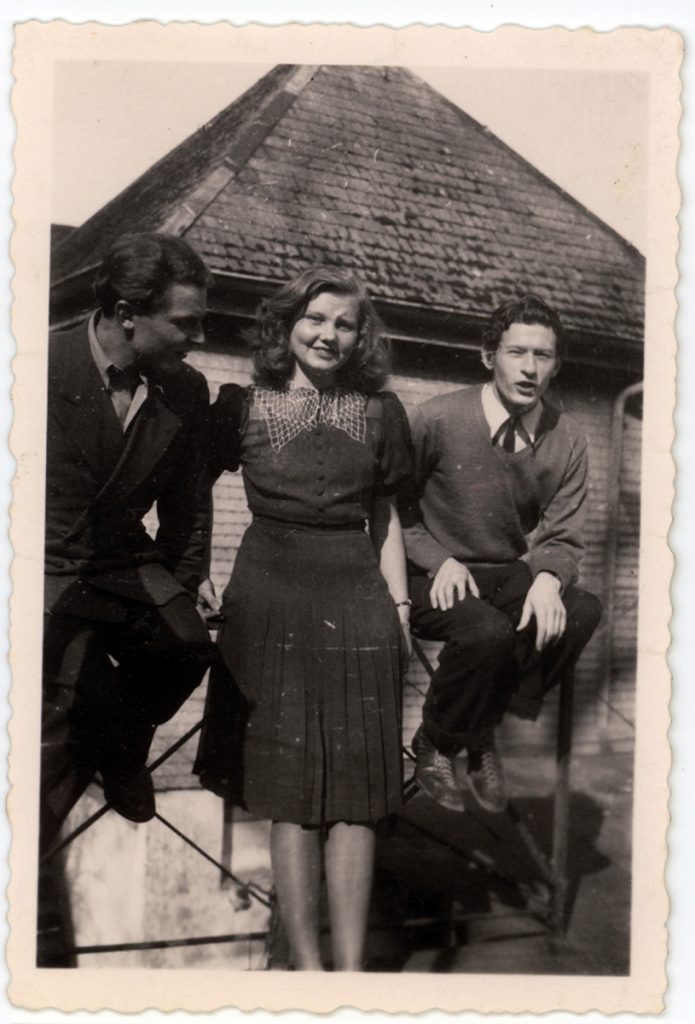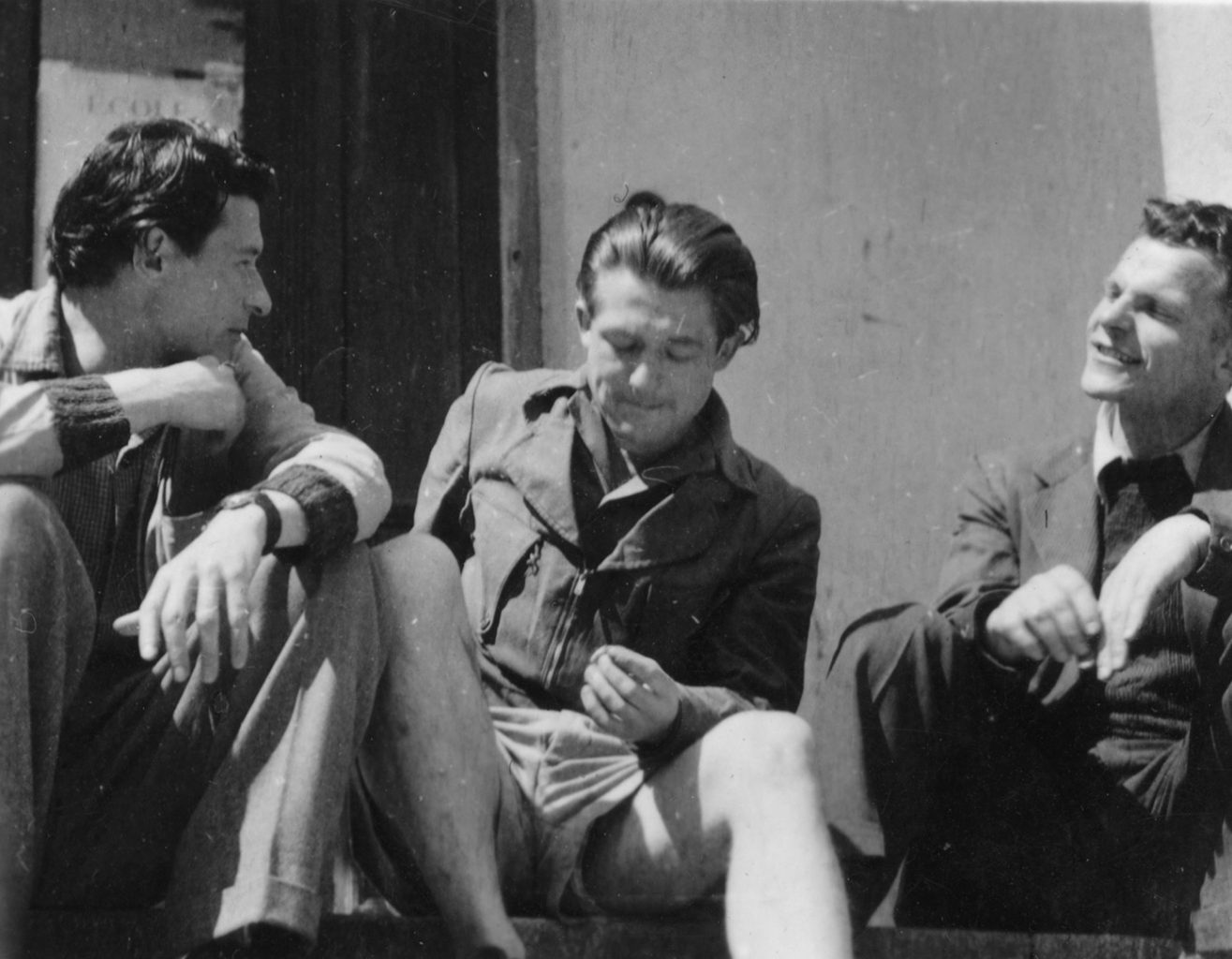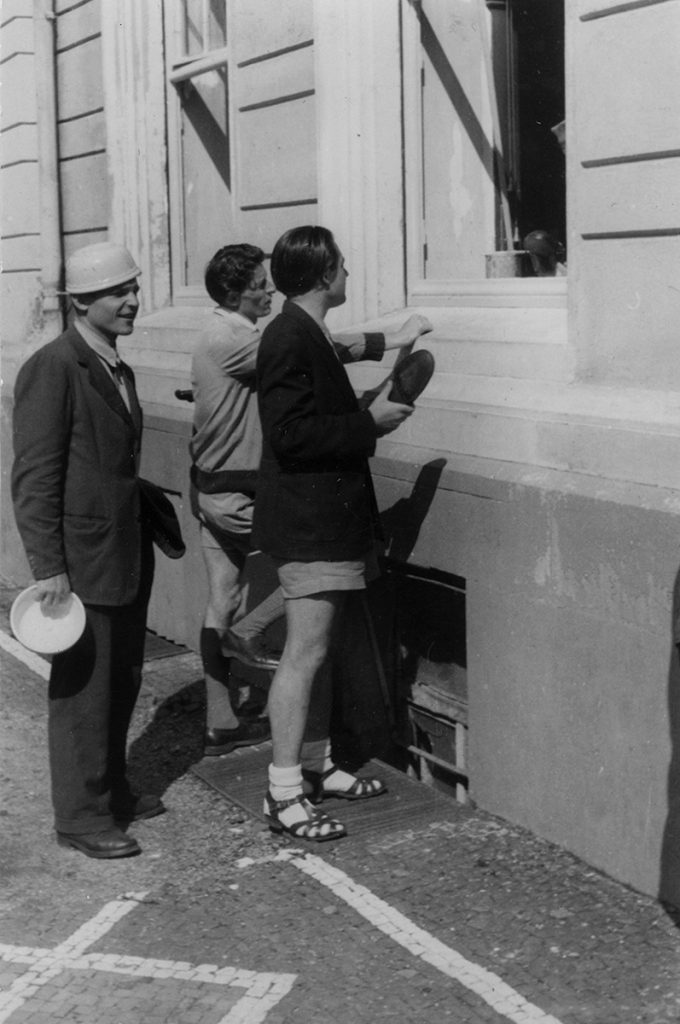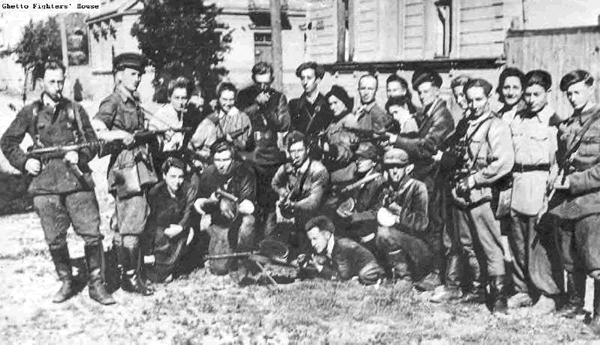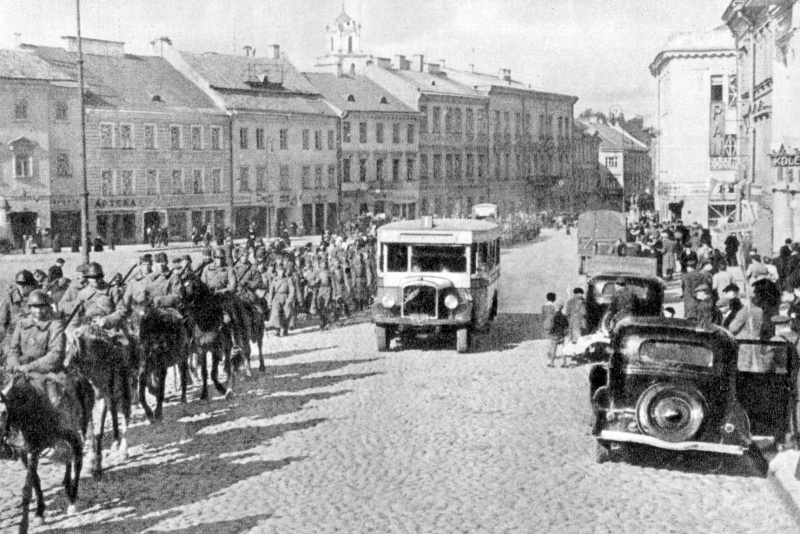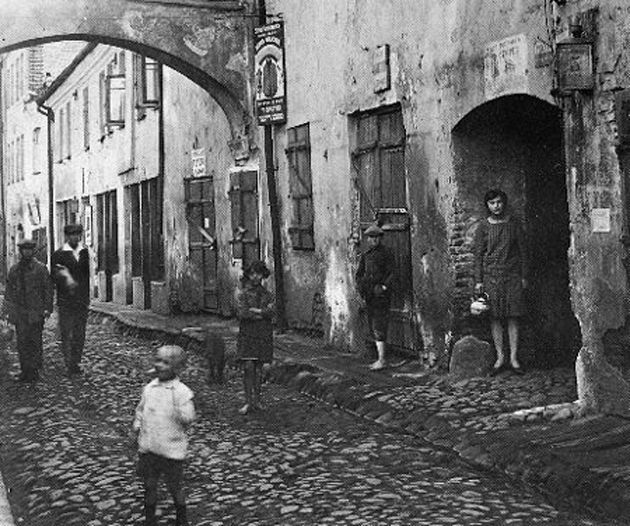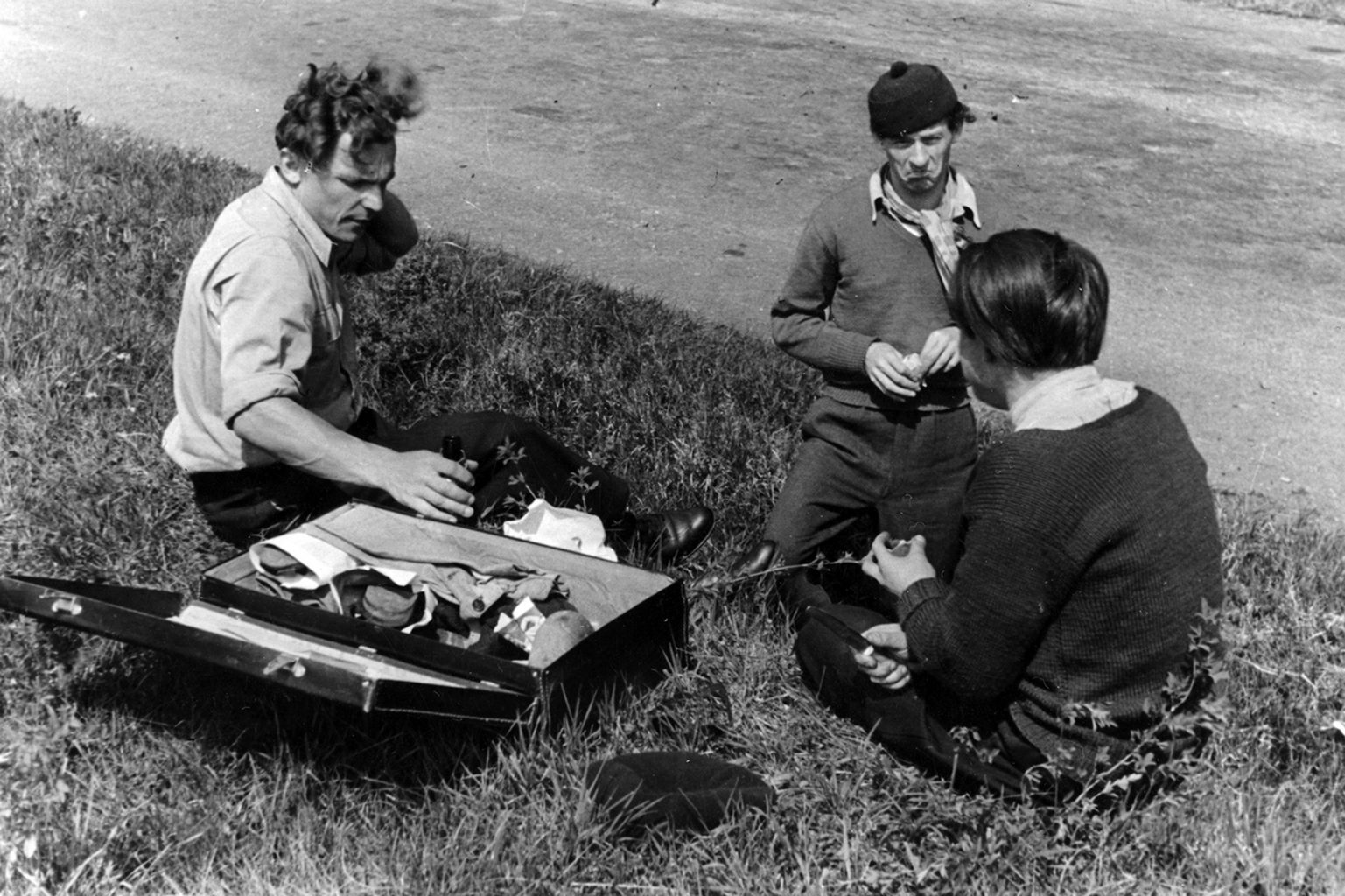
Viktoras with fellow art students in Freiburg
- Boarded in Vilnius for early schooling.
- 1939, Vilnius was finally returned to Lithuania
- Graduated from the Vytautas Didysis Secondary School in 1940
- Entered the Vilnius Art Academy in 1941
- Fled the advance of the Soviet Army in 1944 to Vienna then to Munich to study at the Art Academy of Munich
- Moved to Freiburg in 1947 to the L’École des Arts et Métiers studying under Teleforas Valius
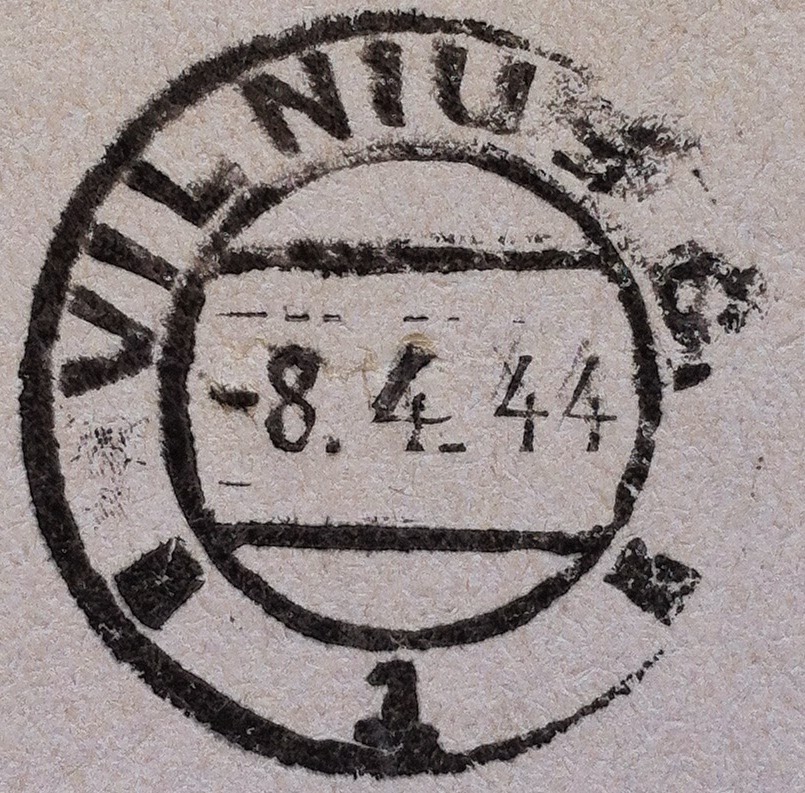
From Vilnius to Freiburg
When the Poles had claimed Vilnius as their own, expelled most of the citizens, imported Russians and Poles to fill the emptied homes, Viktoras was young enough to avoid the restrictions imposed on the adults and could cross over the demarcation zone to visit his grandparents in free-Lithuania where he was kept schooled with the love of his country and its traditions and language.
Back in occupied Lithuania, things were very different: schools were forced into ignoring the heritage and were taught either in Russian or Polish.
When Viktoras finally graduated from High School, he entered the Vilnius Academy of Art to study painting. During this time he found work in a printery in Vilnius where he took on basic assistant chores. Unknowingly, these working years infused a passion that would not realise itself for many years to come, self-publishing before the advent of computers.
When the War took hold, many fled the country from the advance of the expected horrors to come and Viktoras sought refuge in the heart of Germany itself, at the Munich Arts Academy in 1944. Two years later, he found himself safely studying in the town of Freiburg (Free City) where some enterprising Lithuanian Artists began (with the help of the French) to set up an art college for expatriate Lithuanian artists, the short-lived but wonderful L’École des Artes et Metiers.
Viktoras enrolled in painting but soon found himself drawn towards the world of Graphic Design:
“I felt that graphics was dearer to me – in it is a much more organised, it has more definition of line, there is no spontaneous weakening of colour. Even now I highly regard great painting, I admire it, and for that reason, I keep colour to a minimal in my own work.”
“In those times, no-one in Lithuania had talked of applied graphics as an alternate art style, it even had no knowledge of its commercial aspects.”
Portrait of the Artist as a young man
Early education
129 students were part of the Freiburg group
Although the school only lasted for five years, many of the students went on throughout the world leaving their expressive marks in each of the countries they settled in: in France, Zibuntas Miksys, in the USA: Vytautas Jonynas (co-founder EAM – 1907-1997), Elena Urbaitytė-Urbaitis (1922-2006), Albinas Elskus (1926-2007), Sandra Laucevičiūtė-Čipkuvienė (1922–2009), Vytautas Ignas (1924-2009), Juozas Mieliulis (1919-2009), Vitolis Dragunevičius (1927-2009), Janina Monkutė-Marks (1923-2010) and Ramojus Mozoliauskas (1925-2010) amongst others,Antanas Mončys, Vytautas Raulinaits, Balys Grebliūnas, Juozas Pivoriūnas, Ramojus Mozoliauskas, and Vladas Petryla, Viktoras Vizgirda.
To Australia, Viktoras settled in Melbourne with Teisutis Zikaras (EAM teacher) and Adolfas Vaicaitis, whilst Eva Kubbos, Vaclovas Ratas, Henry Šalkauskas and Leonas Urbonas settled in Sydney.



